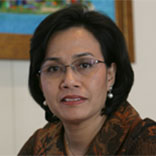In 2004, a tsunami in the Indian Ocean sent massive waves that destroyed parts of Indonesia, Thailand, Sri Lanka and India, causing billions of dollars in damage.
One of the hardest hit places was Indonesia’s Aceh province, which was leveled by the tsunami. More than 221,000 men, women and children were killed.
Ten years later, a panel reflected on what was lost and what was learned from the experience at a webcast event, 10 Years after the Tsunami in Aceh: Rebuilding Better from Disaster. The event was followed on Twitter with #buildbackbetter.
World Bank Managing Director and Chief Operating Officer, Sri Mulyani Indrawati, was the planning minister in the Indonesian government at the time when she flew to the devastated province. “It was unbelievable,” said Indrawati, who was overcome by emotion as she recalled the devastation to her country. “The whole city was destroyed.”
The province was totally isolated without communications or infrastructure. The local government was paralyzed as many officials had been killed in the disaster or were coping with family losses.
Recovering from the disaster required much more than rebuilding structures, said Indrawati. "It was not just brick and mortar, but rebuilding society,” she said. “When you talk about rebuilding Aceh, you needed to rebuild people’s spirits.”
Axel van Trotsenburg, the World Bank’s vice president for East Asia and the Pacific, said the World Bank Group learned a lot from the crisis “Speed is extremely important, because so many people are suffering,” he said.
It’s also important to be involved after the immediate emergency. “We would be there from day one, but we would be there also for the long-term” providing technical and financial assistance – which is “reassuring for governments,” van Trotsenburg said.
East Asia and Pacific is the “most disaster prone region in the world and the frequency of disasters is increasing,” he said. And the costs of such crises can be devastating, with losses to GDP of up to 30%, hitting the poorest the hardest.

